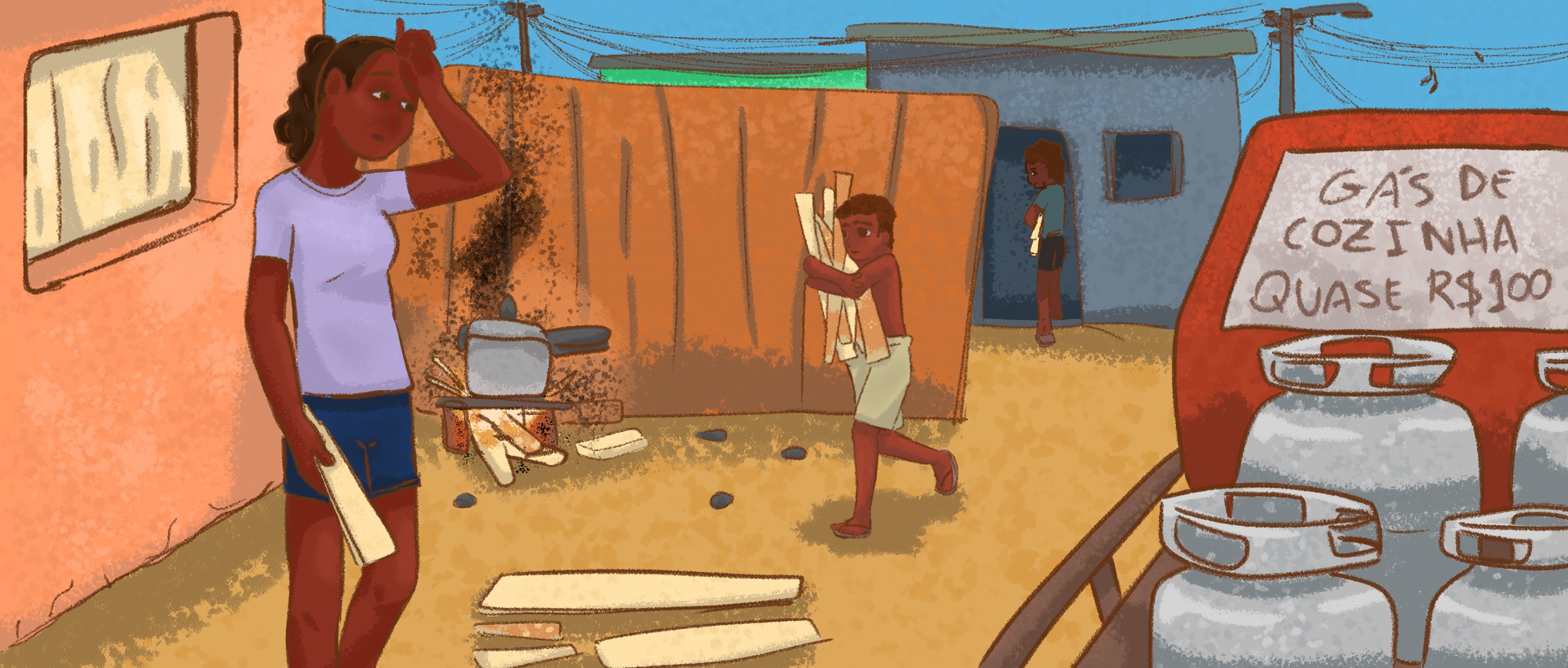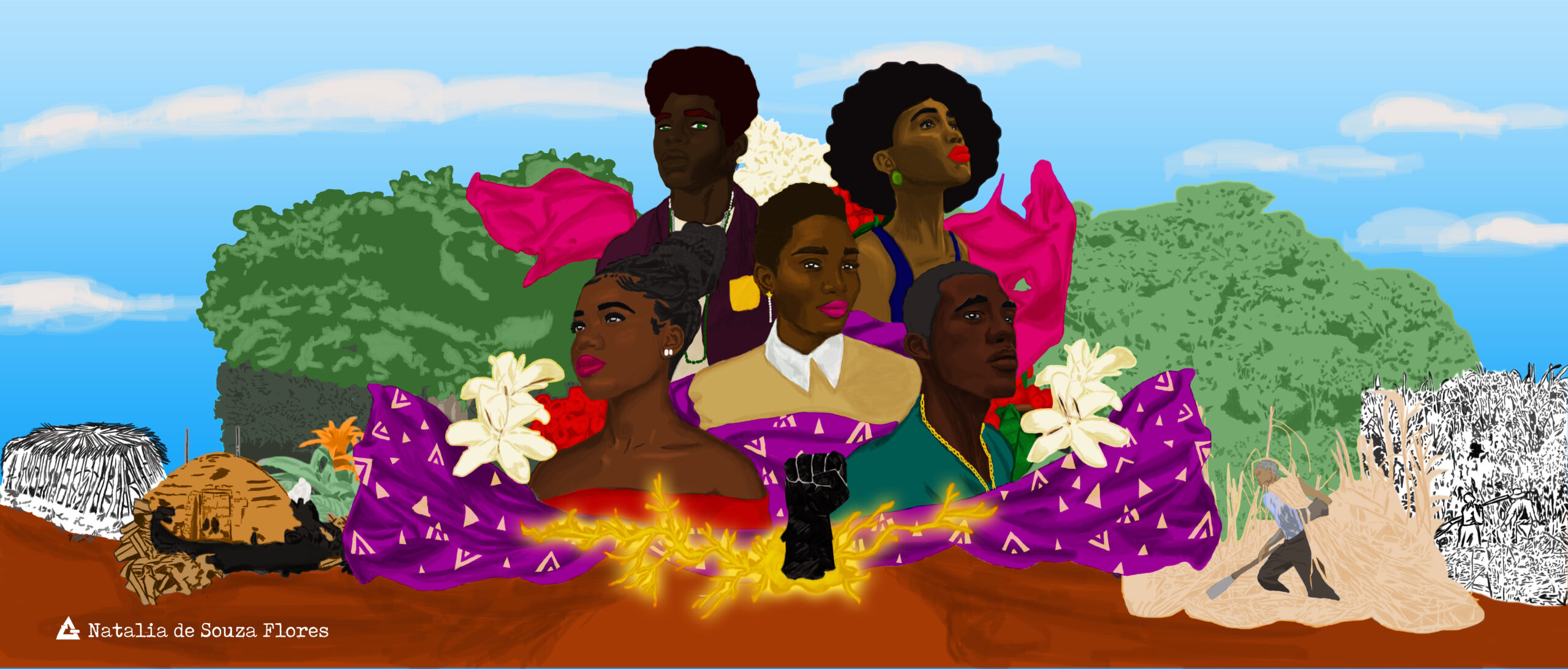Watch the video that summarizes the Energy Justice and Efficiency Series with English subtitles here:
This article and the video above offer a summary and conclusion to the series ‘Energy Justice and Efficiency in Rio’s Favelas,’ available in full in a new special section here. RioOnWatch has recently launched special sections to spotlight long series and special areas of content intensely covered by our team.
Do you know what energy justice is? And what about energy efficiency, have you heard of it? These terms, that at first glance may sound unfamiliar, relate to the everyday access and consumption of energy by a people. To bring this theme to light, in 2021, RioOnWatch published the series Energy Justice and Efficiency in Rio de Janeiro’s Favelas, with original research, reports, illustrations, and videos spotlighting the subject from the vantage point of Rio’s favelas.
Reports from across the city focused on the chronic and historic problems of energy service provision in favelas. In Morro do Sereno, Complexo da Penha, in Rio’s North Zone, electric bills weigh heavily on the family budget, despite the severe deficiency in services provided. This and more was revealed in numbers in “Electricity in Numbers: A Deep Dive into Energy in the Favela of Morro do Sereno,” produced by resident Karina Figueiredo. Also in the North Zone, another study revealed the feeling of energy insecurity experienced by Complexo da Maré residents in relation to the power grid that serves their homes. The study produced by Lourenço Cézar investigated the perception of those who live in the community about energy service and efficiency in Maré.

In all, 18 original pieces were published and illustrated by community-based authors and artists, on energy justice and efficiency in favelas, covering narratives about 23 communities across Greater Rio. Research elucidated, through qualitative and quantitative data, the conditions of access to energy in these territories—a scenario often invisible from the point of view of public data. Another article, “Favela Researchers Survey Residents on Access to Electricity and Blackouts,” produced by LabJaca members Bruno Sousa and Thiago Nascimento, revealed that blackouts are common in the Jacarezinho favela.
From the César Maia favela, in Vargem Pequena, West Zone, came the reflection of how a deficient power service can affect the running of health units and hinder vaccination against Covid-19 in Rio’s favelas. During the pandemic, the high cost of electricity weighs even more heavily on the budget of the poorest families, as demonstrated by the voices of Niterói’s Palmeira favela, heard in the article written by resident Mayara Pereira.
Another energy source that weighs on the budget of peripheral families is cooking gas. In some capitals, the price of the cylinder can reach R$100 (US$19). Unable to afford them, people have been resorting to risky alternatives, such as using firewood and kerosene, as described in the article about how community organizers have been trying to alleviate the situation, by Beatriz Carvalho.

Reports on energy inequality and insecurity also came from the Nova Divinéia community, where resident and author Rodrigo Silva observes a gap between the service provided in the favela and in the neighboring district of Grajaú. In Complexo do Salgueiro, in Greater Rio’s São Gonçalo, besides suffering with the quality and cost of service, families sometimes need to resort to clandestine connections to have access to electricity, since they are not served by the utility, as described by young author Gabriel dos Santos Pereira Lima.

Can clandestine connections, known in Brazil as “gatos”, be understood as theft or as distributional justice? The intention of this article’s author, Rio das Pedras‘s Douglas Heliodoro, was to provoke this debate: “The objective was to generate reflection on the process of criminalization of people who use clandestine connections as a way to access electricity,” he explains. Even though it is considered an essential service, energy is not a social right in Brazil and its universal access is not foreseen in the federal constitution, as reported by Michel Silva, from Rocinha.
In the Pedra Branca Massif, in the West Zone, reports show that energy injustices are a historical problem. Families living in the region have lived cut off from energy distribution grids for years despite their ancestors having provided the energy that built the city, as told by local residents Iamni Torres Jager and Antonio Alonso. In some cases, the absence of the service persists to today.

Memory blackouts can sometimes be complicit in maintaining energy injustices in Brazil. Beatriz Carvalho’s second piece for the series recalls the 2001 energy crisis, which severely impacted peripheral families, with frequent blackouts and high additional charges on electricity bills.
Energy Efficiency and Solutions
“Energy efficiency is nothing more than making rational use of energy. An energy-efficient product is one that performs its function while consuming the least amount of energy possible,” explains Aline Marieta, a Maré resident, architect, and author of the study “Energy Efficiency: Never Seen It, Never Ate It, and Least of All Heard of It!” The intention of the study was to understand the energy differences between self-built favela housing and government-built housing, and how much people knew about energy efficiency, taking the opportunity to explain how to apply it to everyday life.

The proposition of solutions for a more efficient use of energy was also the theme of the article written by Marcyllene Santos, who talks about workshops and educational campaigns in Jardim Catarina, in São Gonçalo. The action is the result of partnerships between community organizations and the local electric utility.
Beyond the rational use of conventional energy—whose main source in Brazil are hydroelectric plants—solar energy is proving to be an increasingly powerful solution in Rio’s favelas, as shown by journalist and Fallet resident Jaqueline Suarez. Some communities in the South Zone—particularly Babilônia and Santa Marta—already enjoy the benefits of clean and sustainable energy consumption, proving the potential of favelas to generate energy and solutions.
From the North Zone comes Parque Arará’s green roof, an inspiring project that can reduce residential temperatures by up to 15°C and, consequently, generate a much more comfortable environment in the summer while reducing the energy spent on air conditioning and fans. The video report directed by the protagonist himself, Luis Cassiano Silva, brings together years of images, research, and materials showing how Silva and his collaborators managed to use vegetation to reduce the temperature inside his house:
The quest for greater energy efficiency also involves transforming waste and effluents into energy. Often seen only as a problem, what we call trash is an opportunity to generate income and energy, as described by Cleber Araújo, from Complexo do Alemão, in his article “Waste is Gold: Energy Recovery as a Solution for the Favelas.”
Viewed as major socio-environmental dilemmas in big cities, organic waste and even sewage could be turned into energy, as shown by Jaqueline Suarez’s video report in Vale Encantado. This possibility is already reality in the community, in Alto da Boa Vista, where two systems are in place. A biodigester receives food waste and generates biogas for the cooperative’s kitchen which hosts visitors, and a biosystem, made up by a biodigester and a plant root zone treats sewage from houses in the community and produces biogas for residents:
Together, these reports and research build a pluralistic and diversified picture of the access to energy in favelas, taking into account their chronic woes, the historical inequalities in their access to public services, and the power of residents in proposing and realizing solutions.
This video report, by Luiza de Andrade, concludes and summarizes our series about energy justice and efficiency in Rio’s favelas.
